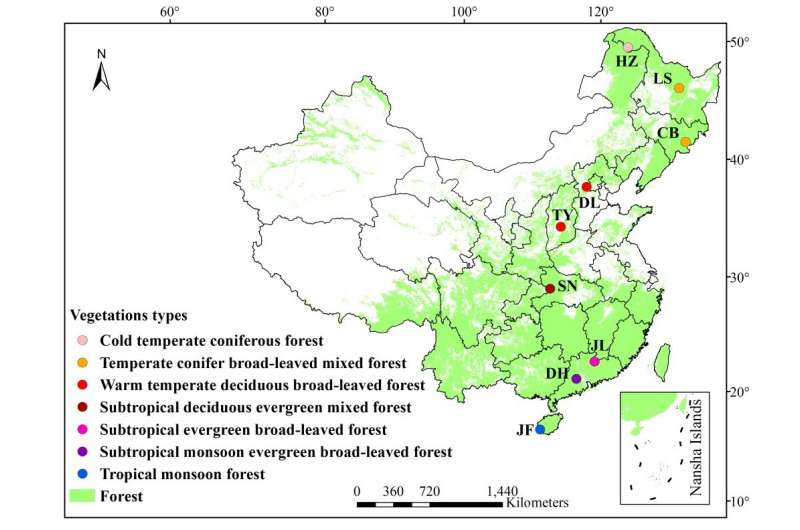Scientists describe the distribution of soil microorganisms

Scientists from RUDN University have classified the distribution of soil microorganisms at different latitudes from tropical to temperate forests. The results of the study were published in Functional Ecology.
Billions of species of microorganisms are found in soil. Therefore, a complete match of microbial composition in different soils is impossible. At the same time, similar groups of microorganisms can be found in very remote soils, where the climate and vegetation differ completely. It is obvious that the microorganisms themselves could not "walk" thousands of kilometers, and the transfer via animals and plants is unlikely. Therefore, the principles of distribution of microorganisms in soils at large distances are practically unknown.
Scientists investigated ecological question: How the distribution of microorganisms in soils depends on the habitat properties, vegetation and their interactions.
"We have described the distribution of microorganisms in soils at different latitudes at a distance of up to 3,700 km and the factors affecting the distribution. We selected soil samples in forests in various climatic zones in China, have identified the microorganisms, mainly bacteria, and compared the composition of microbial groups in various soils depending on climatic, soil and vegetation conditions," said Yakov Kuzyakov, one of the authors of the paper from RUDN University.
Scientists collected soil samples in forests, where plant communities have been stable for decades and centuries. Groups of microorganisms were identified by their DNA in the topsoil. In parallel, the scientists have investigated three large groups of environmental factors: (1) climate-related (average temperature and precipitation), (2) related soil properties (acidity, stable and easily accessible carbon, nitrogen and phosphorus) and (3) related factors of plant communities (the amount and composition of plant residues).
After studying the distribution of large DNA groups, the scientists determined the most important factors for distribution of microbial groups from completely different soils.
"We have identified the predictors—the main factors by which we can determine the microorganisms present in different soils. The distribution of microorganisms is mostly affected by soil properties, less by climate, and much less by plants. We can explain more than 80 percent of the variation in the composition of microorganisms based on these factors and their interactions," the scientist added.
Microorganisms perform various functions: detoxication of pollutants, nutrient mineralization for plants, symbiosis with plants, decomposing plant residues, release of greenhouse gases, nitrogen fixation from the atmosphere, stimulating root growth and many others. These functions affect both the productivity and stability of natural and agricultural ecosystems.
"In the near future, we will try to apply the approaches and the results we got in this study to agricultural and urban soils. The composition and the groups of microorganisms, as well as the human influences affecting agricultural and urban soils, certainly differ. Human factors and land use can play a significantly greater role than, for example, the climatic factor for natural soils. If we know the natural and anthropogenic factors of microbial distribution in soils, we can influence their functions—and thus the productivity and sustainability of natural and agricultural ecosystems," the scientist concluded.
More information: Functional Ecology (2017). DOI: 10.1111/1365-2435.12952/suppinfo
Journal information: Functional Ecology
Provided by Peoples' Friendship University of Russia

















